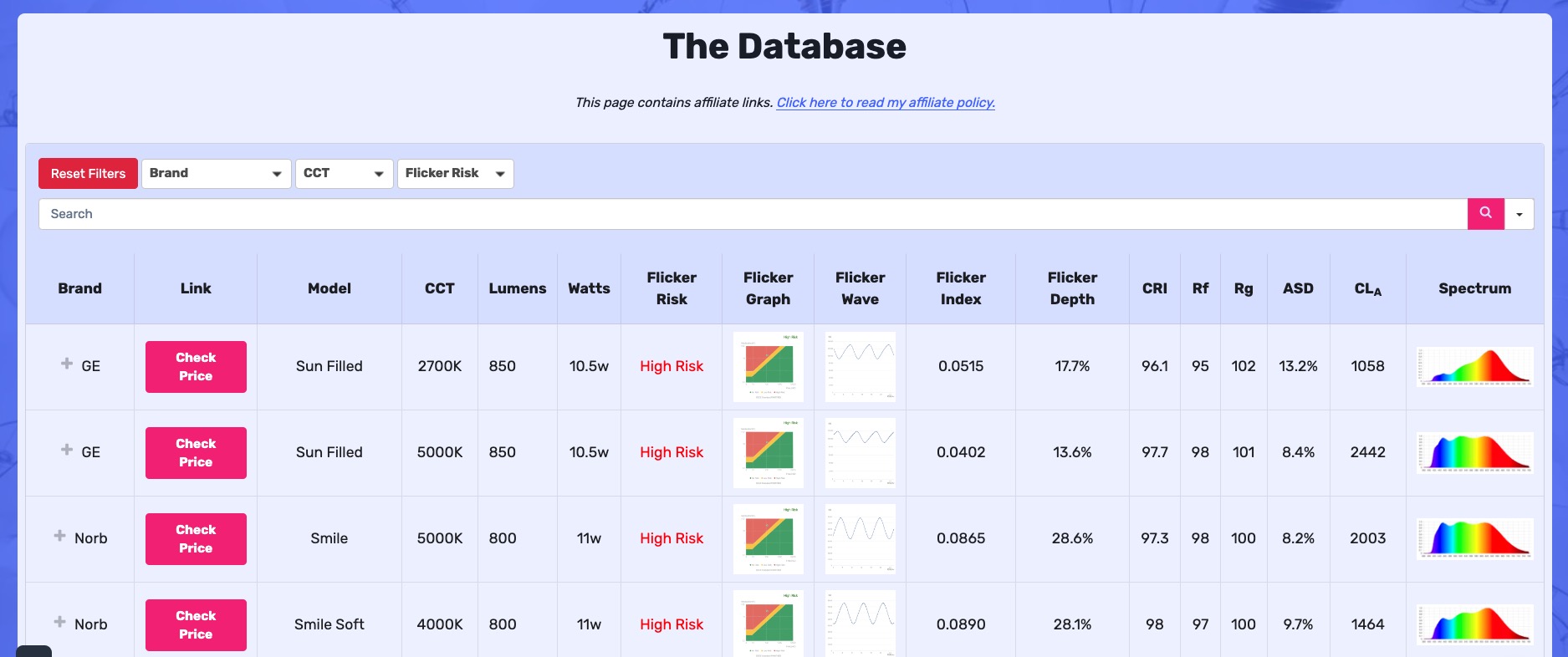- Edited
Hi guys! My name’s Derek and I’m a light bulb addict. looks around the room nervously
I’ve spent the last few months putting together a large database of light bulbs (93 as of this moment), basically any of them I could find.
I’ve lurked here for a while so I’m excited to share this! Hopefully, some of you find it useful.
As many of you are aware, the lighting industry is currently doing whatever they want with regard to flicker, and worst of all, they can say what they like and we just have to take their word for it.
Even companies like Waveform which perform well with flicker, don't release the actual data on their lights.
With this database, I hope to give you and everyone else, access to the information that these companies don’t seem to want to give us.
This includes the flicker index, depth, and waveform, as well as the light spectrum itself and a few other metrics.
One interesting thing I discovered is that incandescent/halogen lights completely stop flickering after the 72w mark! Very cool. I thought they all flickered, but apparently not.
There are of course lights that I have not yet tested, such as Yuji’s MaxCRI and Sunwave lineup. They're just so damn expensive…
(Yuji if you’re watching send me samples I won’t be mad)
As well as random GE and Phillips bulbs and many other smaller brands.
Hopefully, over time the database will just get larger and larger and maybe we can convince these companies to take their lighting more seriously once their dirty laundry is aired for everyone to see.
Any thoughts, suggestions, or comments are welcome!
Enjoy!














